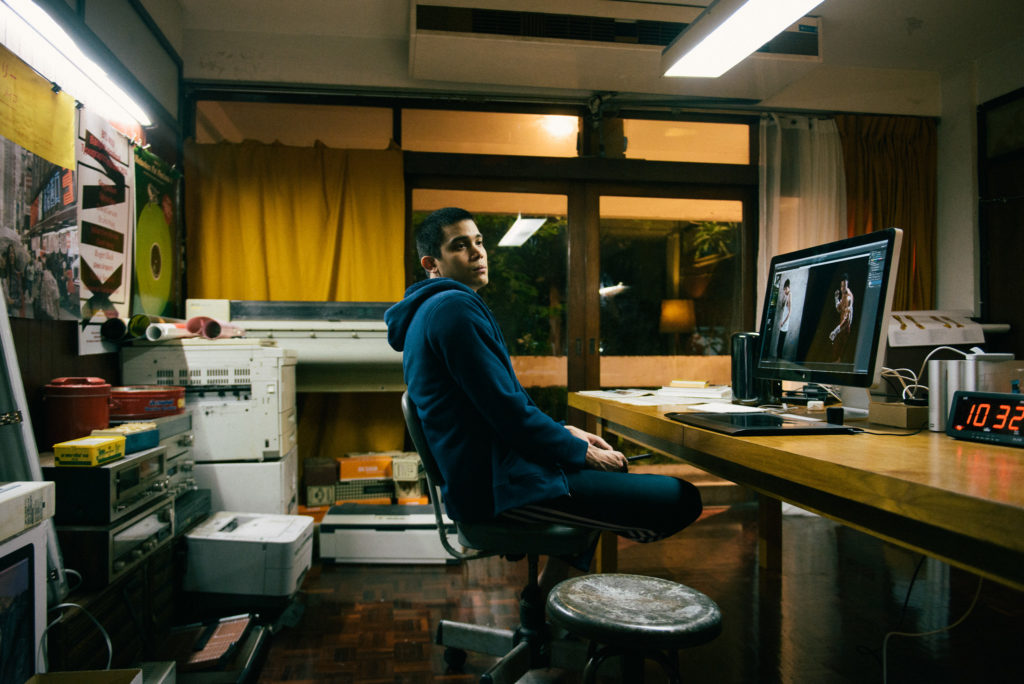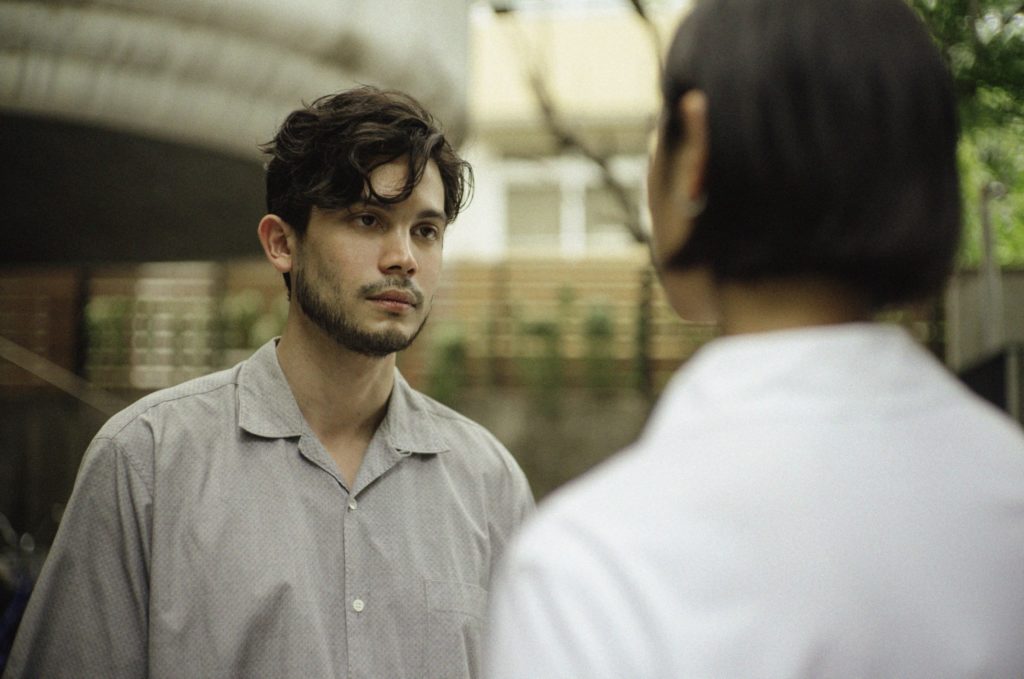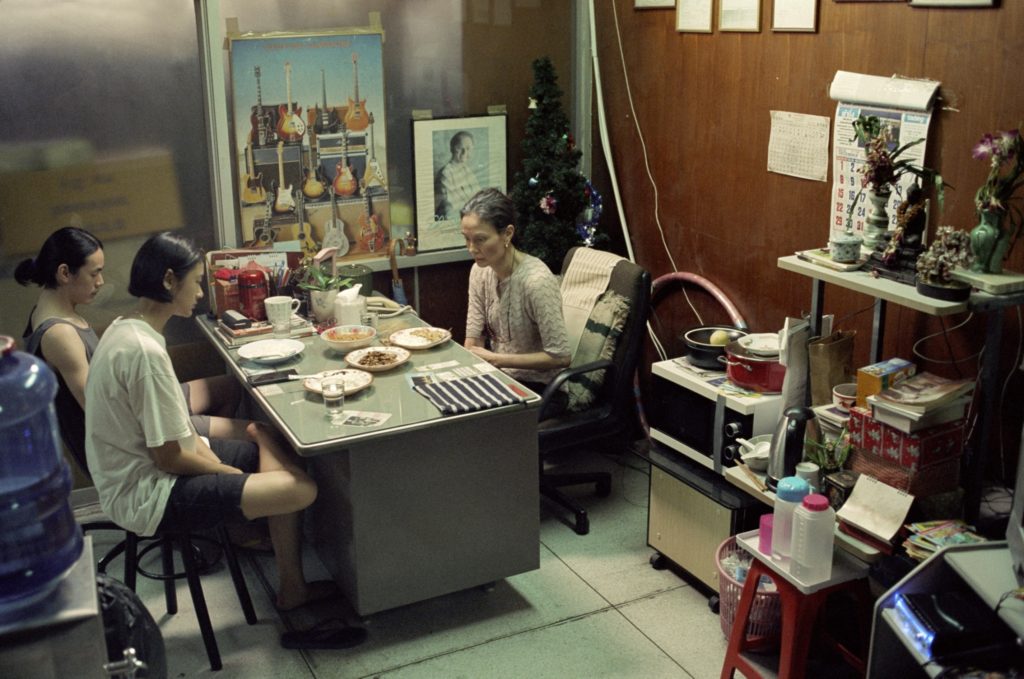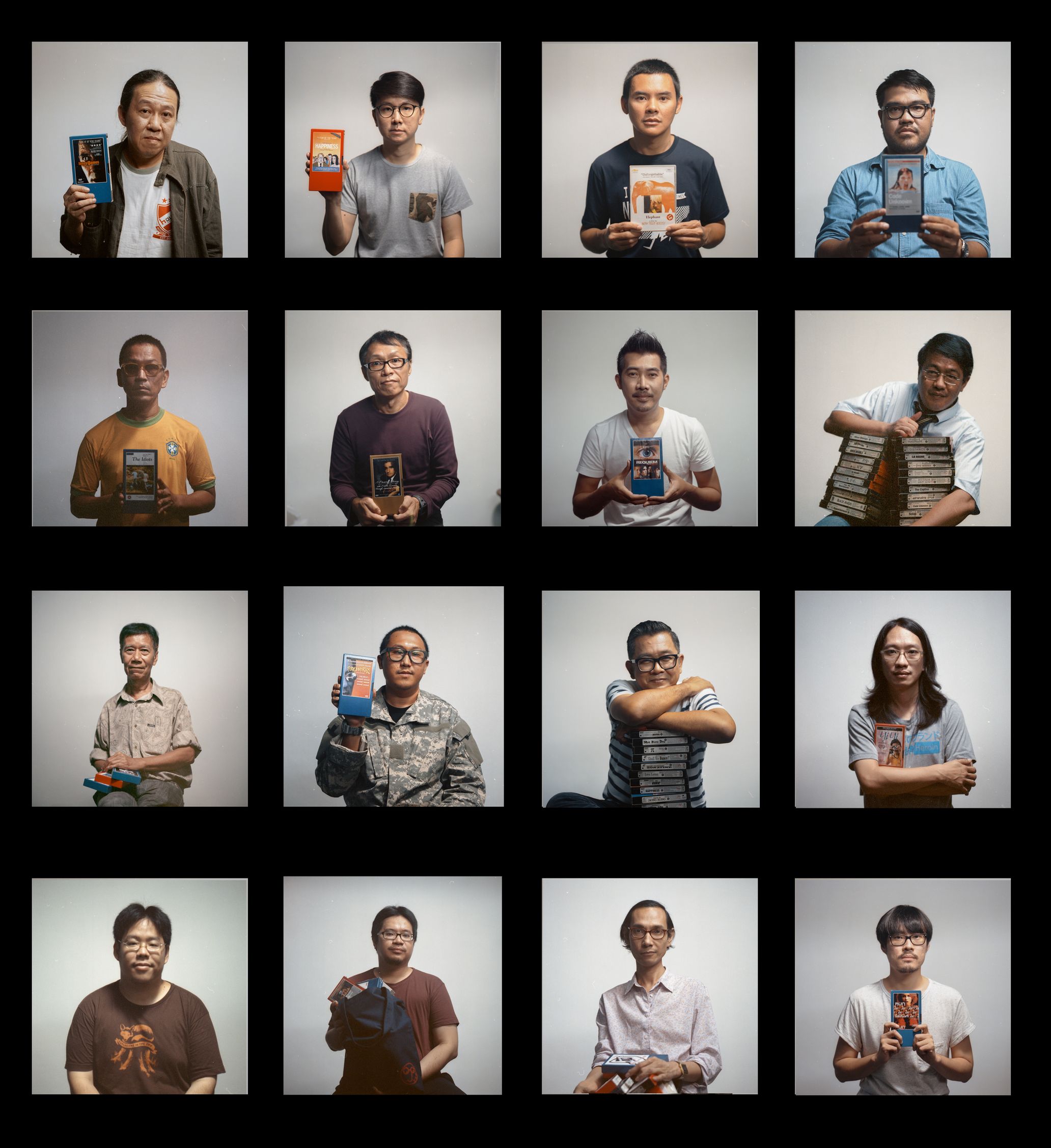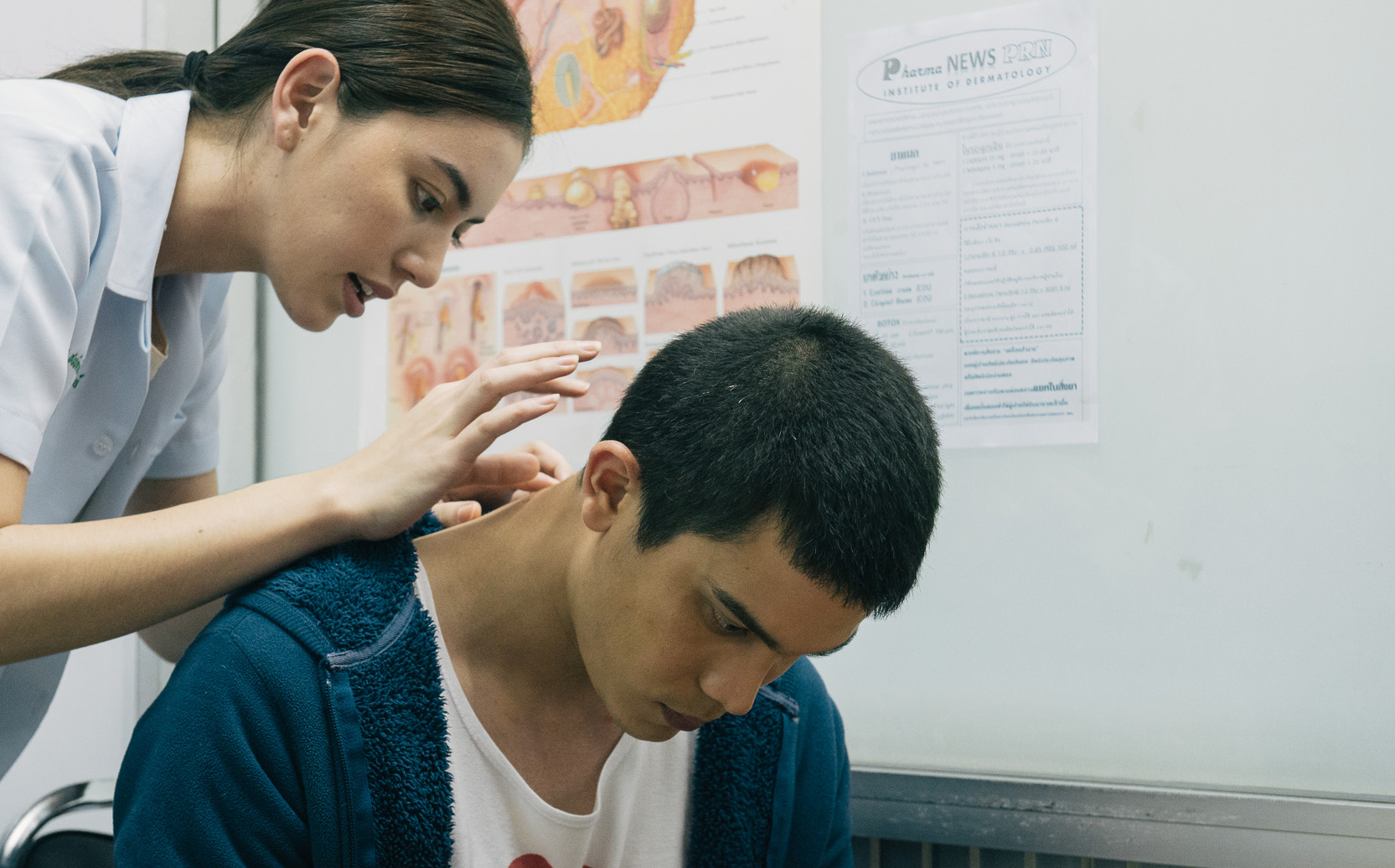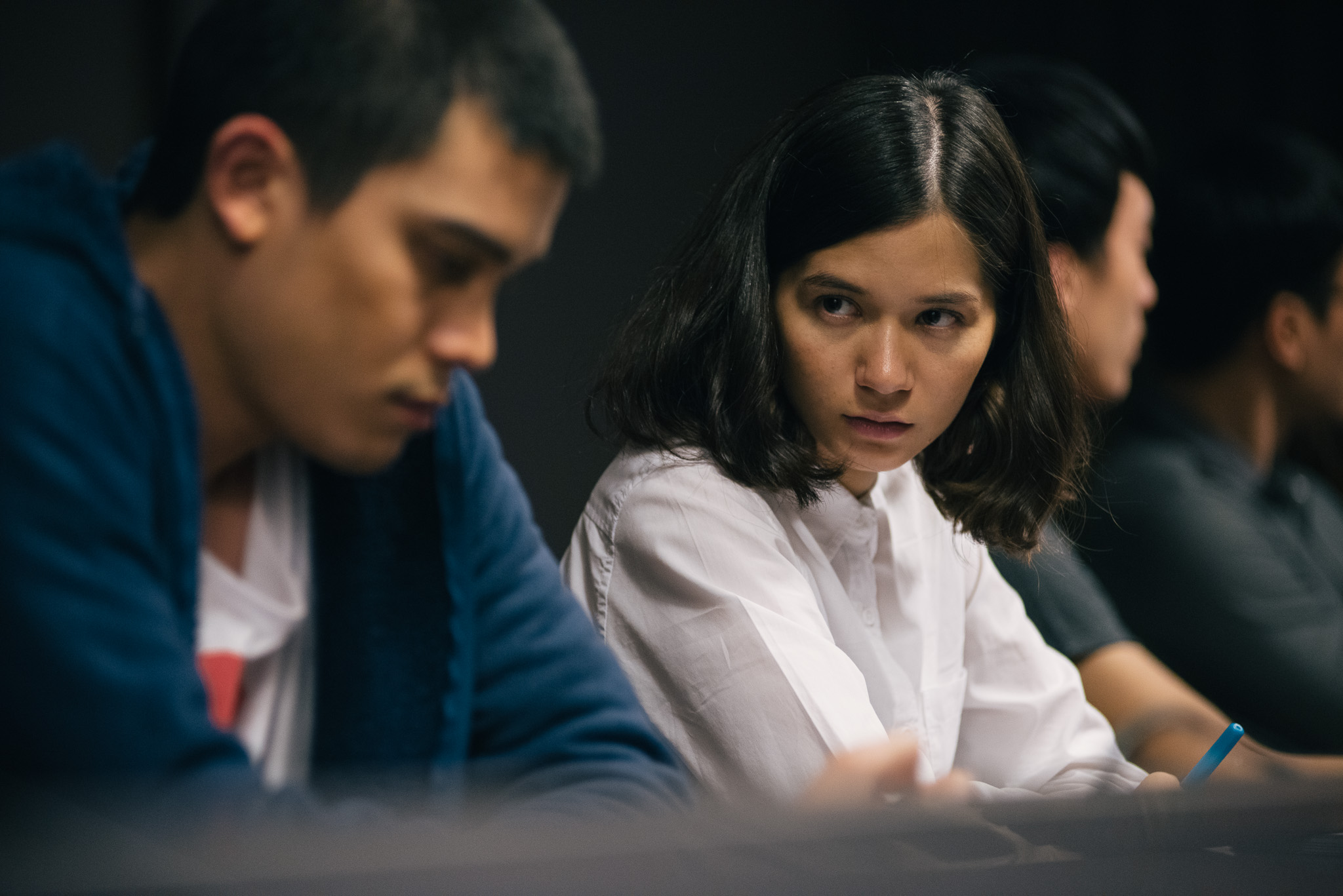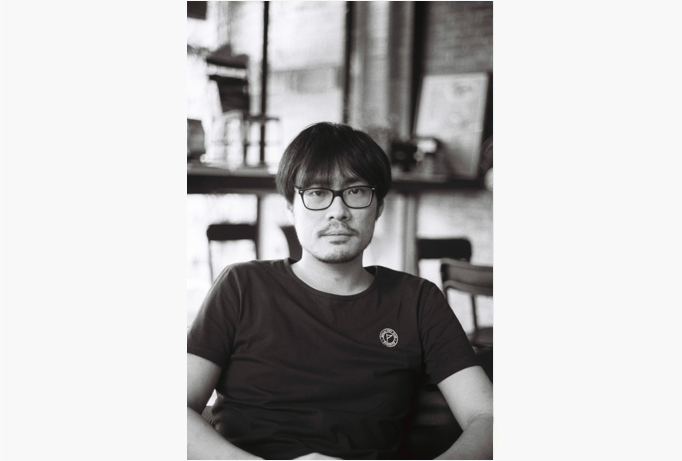Thanks to the popularization of video and streaming websites, it’s now easier to watch Asian films compared to before. We frequently enjoy different aspects of Asian culture, such as Asian dishes a la Chapaguri, Banh Mi, and Pad Kra Pao. However, we don’t take advantage of the fact that we can access Asian cinema like never before and some might even dislike such cinema simply because they’re not familiar with it. Isn’t that a shame? In hopes of shining a light on this, Naoya Sakagawa, a Southeast Asian Studies researcher, introduces Asian cinema and culture while occasionally comparing the state of things between Japan and other Asian nations through a series of columns. His first piece explores Thai cinema. In Thailand, BL dramas (“Boys Love” dramas) are popular and their films are praised in Japanese film festivals. But there’s one maverick director that hasn’t had the chance to show his work in Japanese theaters yet.
Nawapol, the Unlucky Director Whose Work Hasn’t Been Released in Japanese Theaters
The following films are gaining momentum thanks to their nationwide release in theaters this year: “House of Hummingbird” (2018) directed by Kim Bora, “Malmoe: The Secret Mission” (2019) directed by EOM Yoo-Na, and “On the Edge of Their Seats” (2020) directed by Hideo Jojo. What do these films have in common? Well, all three films were shown at the 15th Osaka Asian Film Festival (OAFF 2020) this March. There are various criteria when it comes to judging any given film festival. One such criterion is taking into account the numbers of films that were distributed to theaters after its initial film screening. Another thing to consider is the ratio of films that later became moderate to major hits in theaters. These two factors are consistent when it comes to OAFF and it can be said it’s one of the few Japanese film festivals that are the real deal.
This year at OAFF, “Happy Old Year” (2019) by Nawapol Thamrongrattanarit won Best Picture. Nawapol’s films have gained the interests of OAFF as well as Tokyo International Film Festival (TIFF). Everytime he comes out with a new film, it’s shown here at film screenings too. Unfortunately, none of his works have made it to Japanese movie theaters. With the word “unlucky” as the keyword, I’d like to introduce Nawapol to you all. This quality is something his protagonists have in common as well. I’m going to kick this off by writing about his full-length feature films in order.
Narrative film, “36”(2012 / TIFF2014)
Narrative film, “Mary Is Happy, Mary Is Happy”(2013 / TIFF2013)
Documentary film, “The Master”(2014 / OAFF2016)
Narrative film,“Heart Attack”(2015 / OAFF2016)
Narrative film, “Die Tomorrow”(2017 / OAFF2018)
Documentary film, “BNK48:Girls Don’t Cry”(2018 / TIFF2018)
Narrative film,“Happy Old Year”(2019 / OAFF2020)
I’d firstly like to focus on the era his films were made in. In 2013, there were many protests against the Thai government and in May of the following year, there was a coup d’état carried out by the military, which led to the beginning of Thai’s military administration. This ended only nominally in March of 2019 after there was an election in regards to shifting from military rule to civilian rule. Even during this time, Nawapol continued to create films. Recently, it’s been reported that the Japanese cartoon character, “Hamtaro” has become a symbol of democracy seen in anti-parliament protests led by students. There’s still a long way to go in terms of reaching equilibrium. Further, it can be said that the post-2014 circumstances for filmmaking is unfortunate, due to the limits of self-expression. It can also be said that this doesn’t only apply to Nawapol, but to other artists and young people in Thailand.
The second point I’d like to focus on is how the word “happy” is used in two out of the seven films he’s made. The word is shown twice in the title of the film, “Mary Is Happy, Mary Is Happy” In general, his films are comedies that depict an unlucky yet likeable protagonist struggling to be happy in their own way. His works’ brilliance lies in the laughter and pathos born from the protagonist’s struggle. In a sense, his films are a sort of anthem that reaches out to viewers living in restricted and unlucky times.
Next, allow me to introduce his works in order. His first full-length film, “36” won the New Currents Award at Busan Film Festival in 2012. The synopsis is as follows: a location scout called Sai meets art director Oom on-site and starts to have feelings for him as they begin working together. She records every important detail in her digital camera for work. Two years later, Oom changes jobs. Then, her computer breaks and she loses all of her photo data. The photos she took of Oom were amongst the lost data. On the surface, it’s a common love story but the way the film is constructed is interesting; it’s made up of 36 static shots. In an interview he gave at TIFF 2014, Nawapol said that the film was shot by taking photo by photo, and one roll of film consisted of 36 shots. He also said that the method was something big production companies would’ve never allowed him to do. It was something he could do because he made it independently. Nawapol added that he wanted to create a watchable film, even though it was an experimental one at that. It can be said that he wanted indie film enthusiasts, regular people, as well as young people alike to enjoy the film.
His second film, “Mary Is Happy, Mary Is Happy” is somewhat of a girly film about Mary, a senior in high school that’s about to graduate. She helps her friend pickpocket and works on creating the graduating grade’s yearbook. It’s a coming-of-age story but right in the middle of the film, an unfortunate event happens out of nowhere and this is when the mood of the whole thing changes completely. This might be mere coincidence but the heavy mood of the film is not unlike that of the anti-government protests that happened during the same time the film was released, which was November 2013. While the structure of “36” was based on one roll of film, “Mary Is Happy, Mary Is Happy” took on the challenge of incorporating the use of Twitter. Mary’s tweets, which exceed over 400, appear on screen in rapid succession and the film progresses in this way. The pace does change during the latter half of the story but in general, the film moves at a slow, gentle speed. Nawapol creates a unique groove by juxtaposing the slow pace with rapid fire tweets.
His third film, “The Master” is a unique documentary that looks back at a bootleg VHS shop that influenced people like Banjog Pisanthanakun, who directed the highest grossing film in Thailand, “Pee Mak” (2013). The store also inspired pioneers of Thai New Wave directors. Because there were no arthouse theaters in 90’s Thailand, it was hard to access foreign arthouse films. However, thanks to the opening of a bootleg VHS shop in a maze-like marketplace, cinephiles found a way to quench their thirst for rare foreign films. These people consumed the works of Quentin Tarantino, Wong Kar Wai, Shunji Iwai, Takeshi Kitano, as well as J-Horror films. This served as the preface for Thailand’s New Wave movement, which started in 1997. If it weren’t for the owner of the VHS shop, the Thai New Wave movement might’ve been founded much later. I think this film is a masterpiece about cinephiles.
Nawapol’s fourth film, “Heart Attack” is a romantic comedy that follows Yoon, a freelance graphic designer that developed rashes all over his body due to overworking. He goes to get it checked out and ends up falling in love with the dermatologist that examined his condition. The Thai title translates to “freelancer, don’t get sick, don’t get rest, don’t fall in love with a doctor.” “Heart Attack” was distributed by a mainstream film studio company called GTH and it features popular actors. For instance, Davika Hoorne, who plays the dermatologist in the film, also stars in “Pee Mak” “Heart Attack” is narrated by Yoon and the relationship as well as the disparity between the narration and the visuals are just right. In an interview with Ginmaku Kanwa, he mentions how the way he uses disparities in his films is similar to Takeshi Kitano. Yoon’s situation gets worse as the story progresses and yet, there’s humor in the black comedy. This film might be similar to Takeshi Kitano’s works in the sense that tragedy and comedy are two sides of the same coin.
His fifth film, “Die Tomorrow” was made after Nawapol got inspired by newspaper headlines from 2012 to 2016. The film is an anthology with six stories centered around people living their last day on earth. It’s part fiction and part nonfiction; some stories are told from many perspectives such as those that are going to die, rivals, and friends while other sections are interviews about death. Loss and death are running themes in Nawapol’s filmography and he’s explored this theme thoroughly before. “Die Tomorrow” asks the audience about death but at the same time, it makes the audience think about life itself. It’s reminiscent of one part from “Essays in Idleness,” a collection of essays written by a Japanese monk named Kenko (Hoshi) between 1330 and 1332. In passage 155 he writes:
“…Not so the time of death. We do not always see its approach; it can come upon us from behind. People know that they will die, but death will surprise them while they believe it is not yet close. It is as if we gaze at the far-off ebb-tide flats while even now the sea is rising to flood the rocks we stand on.”
(‘Essays in Idleness,’ passage 155)
His sixth film, “BNK48: Girls Don’t Cry” is a documentary about Bangkok-based BNK48, the sister group of AKB48 that rose to fame. He said that he wanted the film to go beyond the “idol/popstar” genre; he wanted to make a coming-of-age film. A large portion of the documentary includes one on one interviews with 26 first-term members, which were conducted over the course of a year. The interviews show the girls in an authentic and vulnerable light, as some girls express the reservations they have with AKB48’s “Senbatsu” Election system while other girls show how they’re struggling. There are tears involved too. According to the director, the title has two meanings; “get yourself together” and “there’s no need to be discouraged.” The last shot is simply amazing.
Will His Seventh Film Finally Be Released in Japanese Movie Theaters?
Nawapol’s seventh film, “Happy Old Year” portrays a woman who challenges herself to clean up her family home’s cluttered living space in order to turn it into an office space via following Marie Kondo’s “The KonMari Method” However, things don’t go smoothly. Jean, the protagonist, doesn’t see eye to eye with her mother, who wants to keep pieces of furniture that reminds her of her husband who left the family. Jean also can’t let go of the things she borrowed and kept from her friends and ex. So she decides to return the belongings she kept to their owner, including her ex. This film also shares some things in common with “Essays in Idleness,”
“A collection of vulgar objects looks bad, while good ones will suggest a futile attachment to worldly things.”
(‘Essays in Idleness,’ passage 140)
In “Bad Genius” (2017), Chutimon Chuengcharoensukying plays Lynn, a character who struggles to come to terms with how “letting go” doesn’t only apply to material objects; it also applies to intangible memories. He depicts the conflict of letting go in a meticulous way. This film explores the theme of memories, like Nawapol’s debut film “36” The way he treats the subject matter is a testament to his maturity and growth, seen in the way he captures the antagonism between Lynn’s parents and her. The emotional performances are cleverly restrained and subtle, which enable the audience to come up with the emotions themselves. Further, because Chutimon Chuengcharoensukying had a brilliant performance in not only “Bad Genius” but in “Happy Old Year” as well, the latter film became both Nawapol and Chutimon’s representative work.
The director hasn’t had luck in regards to his films being released in Japan but people are anticipating the nationwide release of “Happy Old Year” Also, it can be said that his work is Thailand’s answer to “Essays in Idleness,” as his films focus on unlucky yet lovable protagonists that provide the viewers with pathos and laughter about their immediate surroundings. I reckon his films will give Japanese people happiness and joy during this time where people are held back by coronavirus. I’m excited to see the impact his Japanese release will bring about.
Nawapol Thamrongrattanarit | นวพล ธำรงรัตนฤทธิ์
Born in Thailand in 1984, Nawapol Thamrongrattanarit is a director and scriptwriter. He began creating experimental short films and documentaries as a student in Chulalongkorn University. In 2008, he co-founded “Third Class Citizen,” a Thai film and video activist group that hosts film screening events. He’s also one of the scriptwriters of the hit, “Bangkok Traffic (Love) Story” (2009), which was shown at Kyoto International Film and Art Festival 2019 and “Seven Something” (2012), which is the 7th anniversary film from GTH.
https://twitter.com/ter_nawapol
Pictures provided OSAKA ASIAN FILM FESTIVAL
Translation Lena-Grace Suda

